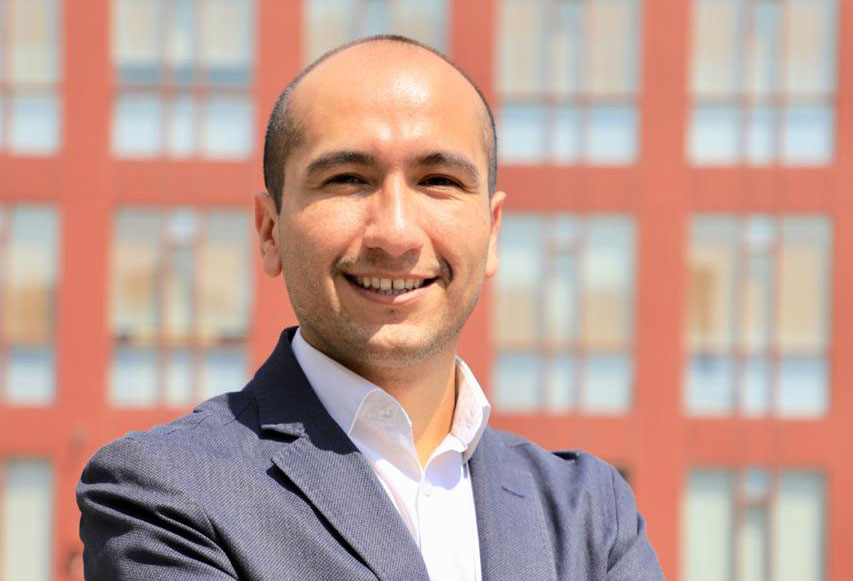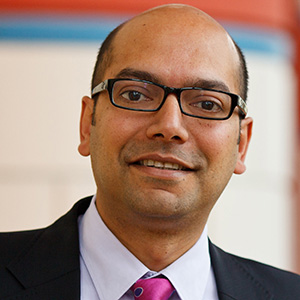The Base of the Pyramid (BoP) consists of the half of the world’s population which earns less than $1,500 per annum per capita. Most of those who belong to the BoP live outside the formal economy and face unmet needs in basic areas such as food, financial services, and education. Because of their low purchasing power and the fact that they lack access to the formal banking system and formal supply chains, products and services designed for higher-income groups in the formal economy are typically either inaccessible or unaffordable for this large group of people around the world.
Frugal innovation—the use of ubiquitous technologies to innovate faster, better, and cheaper—offers entrepreneurs, large companies, and nonprofits an approach to addressing the needs of the BoP by designing highly affordable solutions that are different from the mainstream alternatives available in typical market segments. As such, frugal innovation has gained traction in many different sectors by offering quality solutions in resource-constrained environments. Examples include microcredit, affordable mobile phones, low-cost health care and education products, and mobile banking. Thanks to these innovations, millions of people in the BoP now have access to technologies and services that they previously could not afford or access.
Despite the success of different solutions under this approach, there have been many others that have failed. In part, this is because the frugal innovation approach typically rejects the use of aspirational factors such as lifestyle narratives or appealing designs, either because doing so increases the final price of the product or because these factors are not considered important to the BoP. Take two examples from India: the Tata Nano, a highly affordable eco-friendly car, and the ChotuKool, a low-cost refrigerator that runs on batteries. According to analyses published by the Wharton School and Harvard Business Review, both products failed to sell as well as hoped because their creators did not fully appreciate the aspirations of low-income consumers. Chotukool has not scaled up beyond a few tens of thousands of units over 15 years, and Tata Motors closed production on the Nano in 2018 after years of low sales. Even though both products were cheaper than existing solutions, low-income consumers still preferred to pay a premium for alternative brands and even saw used cars and refrigerators as better options. In their post-mortem analyses, both organizations realized that their products failed partly because their low-income targets did not wish to purchase products that reinforced the perception they were poor.
Companies and nonprofits that aim to reach the BoP should therefore be more realistic and empathetic toward the strong desire of the poor for aspirational goods. Examples of common aspirational items widely consumed by the BoP are private schools, beauty care items, jewelry, stylish footwear, consumer goods that come with stylish packaging, and entertainment. Why do people who survive on a monthly per capita income of $150 or less buy aspirational goods? Evidence suggests that, because they have low social status, consumers at the BoP seek to consume aspirational items as a way to increase their self-esteem or achieve a higher social standing within their communities. Another way to explain this phenomenon is by using the jobs-to-be-done theory of Clayton Christensen. This approach suggests that consumers adopt innovations not merely for their functional benefits like price or features but because of their emotional and social dimensions as well. Sometimes, Christensen suggests, the job a customer needs done is aspirational, such as feeling a certain way or achieving a particular status and being recognized by others. In such situations, aspirational products resonate with people’s emotions (how they wish to feel) or their social striving (how they wish to be perceived by others).
It is now increasingly clear that BoP consumers’ decisions are not purely driven by low-cost considerations. This can lead to significant negative outcomes. When BoP consumers cannot afford aspirational products, they often opt to consume counterfeit items; this in turn promotes and perpetuates a low productivity informal economy. Alternatively, they take out loans to purchase authentic but more expensive items; this compromises their ability to fulfill their basic needs and, in some cases, leads them into debt traps. For example, one study found that, in the period 2011-2012, nearly 55–60 million low-income Indians were pushed into poverty because of aspirational consumption, resulting in a reduction of about 13 percent of their daily calorie intake.
Since frugal innovation is considered a way to build a more inclusive and sustainable future, we believe that incorporating aspirational aspects can help organizations nudge consumers in the BoP to use more affordable solutions. Based on our research into the practices of startups and companies, we now present some strategies that organizations can adopt to achieve these outcomes.
Use Aspirational Narratives
If you wish to successfully target the BoP, do not communicate your solution using narratives that portray the BoP as poor. Evidence from various emerging markets suggests that using positive narratives encourages BoP consumers to buy frugal solutions that improve their social status or self-esteem. Creating such a narrative will show them the emotional and social benefits they can get by using your solution.
For instance, in Mexico, Mariana Castillo and Eduardo Pulsen have disrupted the eyeglasses market with their company Ben & Frank which makes and sells affordable but attractive glasses. The company’s narrative, both online and in its physical stores, is that its glasses are innovative, cool, and of high quality. As a result, the company is growing fast in Mexico and expanding its operations to other Latin American countries; not only because of its prices but also because of a creative narrative that reminds the BoP consumer that “you deserve the best.”
Another example is Kingo in Guatemala. Jose Ordoñez founded the startup to provide decentralized solar energy services to families and businesses in off-grid villages. The positive narratives that Jose and his team have developed to support their products can be seen on the company’s website, through its social media campaigns, and its products themselves. Kingo frames itself as aspirational by emphasizing that “we turn their lives ‘on’ towards a better future.” The company uses images and videos that depict the BoP with a better and brighter future and show how entertaining, educational, or social activities can be accessed through its energy solutions. The narrative is straightforward, “we help you to achieve a better present and a brighter future.” So far, Kingo has equipped 15,000 households in Guatemala with an innovative off-grid box that produces cheap solar electricity.
Incorporate Design and Eliminate Other Factors That Increase Price
Research has found that design is one of the most powerful tools for increasing adoption and aspirational consumption. Therefore, instead of focusing exclusively on reducing price, think about how you can incorporate design to create more appealing frugal solutions. At the same time, eliminate factors along the value chain that increase the final price. Consider again the example of Ben & Frank. The founders eliminated intermediaries such as brand holders and wholesalers, thereby avoiding the need to make traditional tradeoffs between design and affordability. Design at B&F is not only present in its products, but it is also present in the company’s stores (which are small, minimalist, and located in affordable locations) and at the core of the entire customer experience. At B&F it is easy to try, choose, and buy “cool” glasses for everyone. Thanks to the use of design in every aspect of the business, Ben & Frank is not only helping the BoP to get good quality eyeglasses, but they are also boosting the self-esteem of “four-eyed” people. As a result, the company has one of the highest Net Promoter Scores, a measure of customer experience, in the category in Latin America. Interestingly, B&F has achieved success in different target markets, not just the BoP.
Identify Social and Emotional Jobs, and Build Your Solution Based on Them
Because consumers at the BoP do not make decisions purely based on functional “jobs” or price, you should identify the emotional and social “jobs” that are likely to boost consumption. Studies have shown that companies that identify and use those jobs when trying to innovate significantly increase their chances of success. First, identify jobs by interviewing or observing the actual behavior of the BoP. Empathy is key here. Keep in mind two important questions: i) What kinds of emotions do people want to feel when buying and using specific solutions? ii) How do people desire to be seen by their community when using specific solutions? Once you have identified emotional and social jobs, you can define your value proposition accordingly: what features should the design of the solution have, and what narratives are likely to enhance the jobs?
When Matias, Karim, and Pablo founded Notco, a startup focused on removing animals from food production, they developed “Giuseppe,” an artificial intelligence program that studies animal-based foods to recreate them and replace them with plant-based ones. Notco’s solution brings many functional benefits and allows a more affordable way of producing non-animal ingredients. But the team knew that if they wanted to succeed, they needed to understand the social and emotional stigma that comes with the consumption of plant-based products among their target consumers. For example, consuming meat is seen as a sign of wealth and masculine behavior and is a social ritual among the BoP in many countries. By deeply understanding their consumers, they created new products that resonate with their consumers’ emotional and social needs. For example, “Not-Milk” tastes like and has the texture of actual animal milk. The package recreates the look of traditional milk brands, and the marketing narrative is intended to positively inspire people to consume plant-based items rather than shaming them for not doing so. As a result, Notco has a valuation of over US$1.5 billion, generating better, cheaper, sustainable, and aspirational plant-based products.
Take a ‘Responsible Aspirational Marketing’ Approach
Because aspirational consumption could cause negative outcomes at the BoP (e.g., compromising the basic needs of BoP consumers and increasing debt), organizations need to be cautious and take a “responsible aspirational marketing” approach. Some companies and non-profit organizations have successfully used this approach to consciously connect with customers and educate them. For example, Unilever has created a responsible marketing code to set out global minimum standards that apply to Unilever’s marketing activities such as brand names, packaging, labeling, or trade advertising. The code explains what employees must not do, such as alter images in a way that advertising is rendered misleading. The idea of “responsible aspirational marketing” in frugal innovation holds that organizations define the needs of the BoP customers, and then deliver value to them in a way that improves their well-being, and creates emotional/aspirational connections, but in a socially conscious way. In doing so, companies ensure they do not use marketing strategies that cause negative outcomes at the BoP. For example, Banco Azteca provides affordable financial services to the BoP in Mexico by using retail stores in towns where no banks offered such services before. At the same time, Banco Azteca offers free courses, workshops, and tools to educate and help people make better decisions with their money and investments.
Using the above strategies can help organizations make the affordable aspirational and increase the adoption of frugal innovations at the BoP. In doing so, they can help consumers to fulfill not only their basic needs with cheaper, better, and more sustainable solutions, but also help them fulfill their emotional and social needs.
The authors are professor of innovation at EGADE Business School (Cristian Granados) and professor of marketing at University of Cambridge Judge Business School (Jaideep Prabhu).
Article originally published in Stanford Social Innovation Review.

